Ford Puma VS Polestar 3 – Specs, Efficiency & Price Comparison
Which model is the better choice – the Ford Puma or the Polestar 3? We compare performance (168 HP vs 517 HP), boot capacity (523 L vs 484 L), efficiency (13.10 kWh5.40 L vs 18.90 kWh), and of course, the price (24800 £ vs 67400 £).
Find out now which car fits your needs better!
The Ford Puma (SUV) is powered by a Petrol MHEV or Electric engine and comes with a Manuel or Automatic transmission. In comparison, the Polestar 3 (SUV) features a Electric engine and a Automatic gearbox.
When it comes to boot capacity, the Ford Puma offers 523 L, while the Polestar 3 provides 484 L – depending on what matters most to you. If you’re looking for more power, you’ll need to decide whether the 168 HP of the Ford Puma or the 517 HP of the Polestar 3 suits your needs better.
There are also differences in efficiency: 13.10 kWh5.40 L vs 18.90 kWh. In terms of price, the Ford Puma starts at 24800 £, while the Polestar 3 is available from 67400 £.
Compare all the key specs now and find out which model fits your lifestyle best!
Ford Puma
The Ford Puma presents itself as a stylish compact SUV with a distinctive design that combines practicality with a dynamic driving experience. Its sleek lines and sporty aesthetics make it stand out on the road, while the interior offers a comfortable and tech-savvy environment. With an emphasis on efficiency and a smooth drive, the Ford Puma is well-suited for both urban commutes and countryside adventures.
details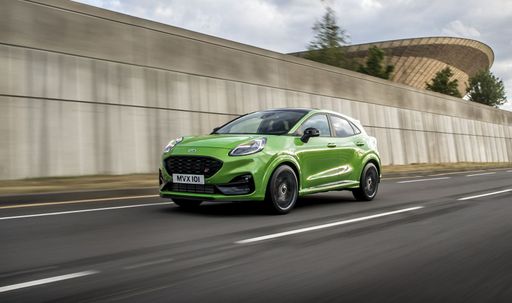 @ puma.fordpresskits.com
@ puma.fordpresskits.com
 @ puma.fordpresskits.com
@ puma.fordpresskits.com
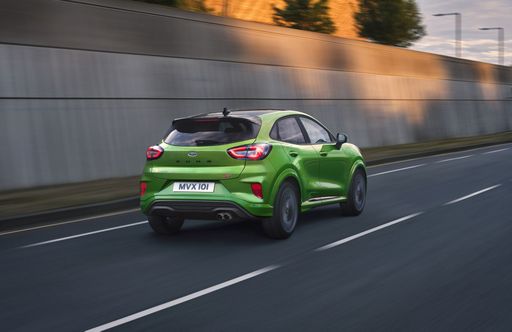 @ puma.fordpresskits.com
@ puma.fordpresskits.com
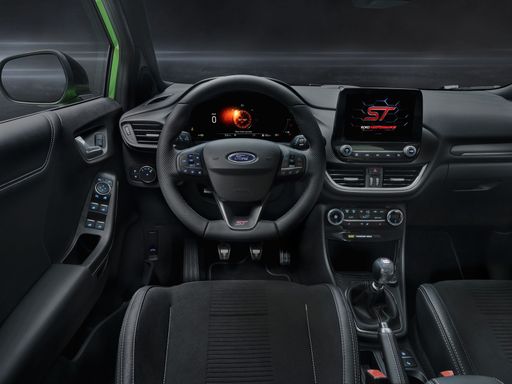 @ puma.fordpresskits.com
@ puma.fordpresskits.com
Polestar 3
Der Polestar 3 präsentiert sich als eindrucksvolles Elektro-SUV, das skandinavisches Design mit nachhaltiger Technologie vereint. Die klare Linienführung und hochwertigen Materialien im Innenraum schaffen eine luxuriöse Atmosphäre, während das fortschrittliche Infotainmentsystem für modernste Konnektivität sorgt. Mit seinem leistungsstarken Antrieb bietet der Polestar 3 ein dynamisches Fahrerlebnis, das sowohl umweltfreundlich als auch leistungsfähig ist.
details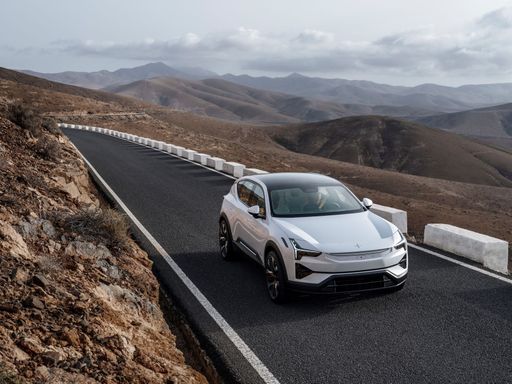 @ Polestar
@ Polestar
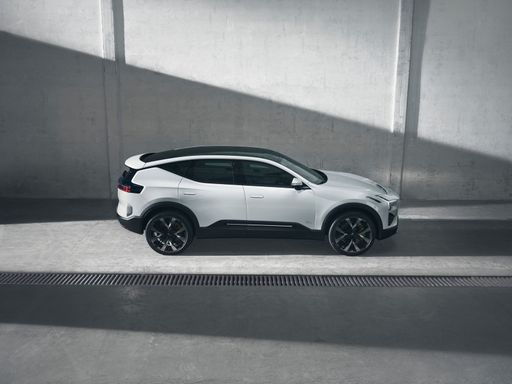 @ Polestar
@ Polestar
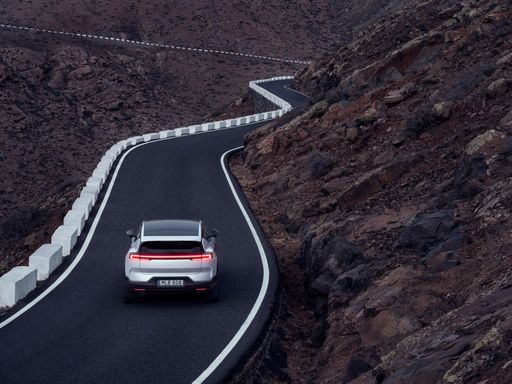 @ Polestar
@ Polestar
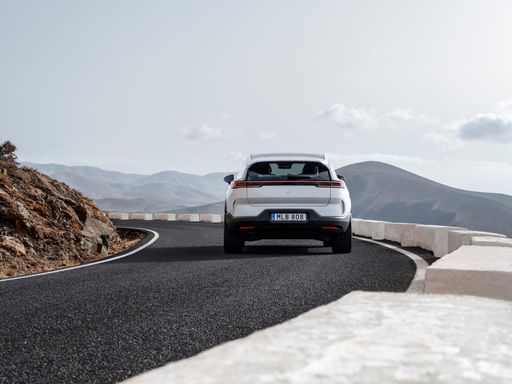 @ Polestar
@ Polestar
 @ Polestar
@ Polestar
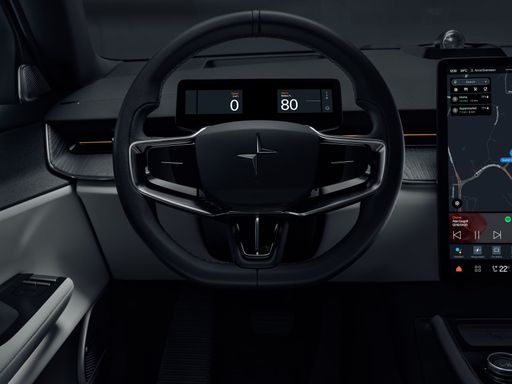 @ Polestar
@ Polestar

|

|
|
|
|
Costs and Consumption |
|
|---|---|
|
Price
24800 - 34800 £
|
Price
67400 - 79000 £
|
|
Consumption L/100km
5.4 - 6 L
|
Consumption L/100km
-
|
|
Consumption kWh/100km
13.1 - 13.7 kWh
|
Consumption kWh/100km
18.9 - 22.1 kWh
|
|
Electric Range
364 - 376 km
|
Electric Range
561 - 650 km
|
|
Battery Capacity
43 kWh
|
Battery Capacity
107 kWh
|
|
co2
0 - 136 g/km
|
co2
0 g/km
|
|
Fuel tank capacity
42 L
|
Fuel tank capacity
-
|
Dimensions and Body |
|
|---|---|
|
Body Type
SUV
|
Body Type
SUV
|
|
Seats
5
|
Seats
5
|
|
Doors
5
|
Doors
5
|
|
Curb weight
1316 - 1563 kg
|
Curb weight
2584 kg
|
|
Trunk capacity
456 - 523 L
|
Trunk capacity
484 L
|
|
Length
4186 - 4226 mm
|
Length
4900 mm
|
|
Width
1805 mm
|
Width
1935 mm
|
|
Height
1550 - 1555 mm
|
Height
1614 mm
|
|
Payload
367 - 469 kg
|
Payload
496 kg
|
Engine and Performance |
|
|---|---|
|
Engine Type
Petrol MHEV, Electric
|
Engine Type
Electric
|
|
Transmission
Manuel, Automatic
|
Transmission
Automatic
|
|
Transmission Detail
Manual Gearbox, Dual-Clutch Automatic, Reduction Gearbox
|
Transmission Detail
Reduction Gearbox
|
|
Drive Type
Front-Wheel Drive
|
Drive Type
All-Wheel Drive, Rear-Wheel Drive
|
|
Power HP
125 - 168 HP
|
Power HP
299 - 517 HP
|
|
Acceleration 0-100km/h
7.4 - 9.8 s
|
Acceleration 0-100km/h
4.7 - 7.8 s
|
|
Max Speed
160 - 210 km/h
|
Max Speed
180 - 210 km/h
|
|
Torque
170 - 290 Nm
|
Torque
490 - 910 Nm
|
|
Number of Cylinders
3
|
Number of Cylinders
-
|
|
Power kW
92 - 124 kW
|
Power kW
220 - 380 kW
|
|
Engine capacity
999 cm3
|
Engine capacity
-
|
General |
|
|---|---|
|
Model Year
2024 - 2025
|
Model Year
2024
|
|
CO2 Efficiency Class
D, E, A
|
CO2 Efficiency Class
A
|
|
Brand
Ford
|
Brand
Polestar
|
Ford Puma
A Glimpse into the Ford Puma: Fusing Style with Innovation
The Ford Puma stands as a testament to modern engineering fused with style. This compact SUV is not just about aesthetics but brings to the table an array of technical innovations, topped with the reliability and performance Ford is known for. Let's delve into the technical specifics and innovative features that make the Ford Puma a stellar choice for any car enthusiast.
Powertrains and Performance
The Ford Puma is offered with a range of powertrains designed to deliver optimal performance whilst minimising fuel consumption. At the heart of this compact SUV is the 1.0 EcoBoost Hybrid engine, available in both 125 PS and 155 PS variants. This engine is a marvel of engineering, optimised to deliver power efficiently with a remarkable fuel consumption ranging from 5.4 to 5.7 L/100km for manual versions, and slightly higher for the automated variants.
The top-end 1.5 EcoBoost ST variant takes performance up a notch, providing a robust 200 PS that propels the Puma from 0 to 100 km/h in just 6.7 seconds. This variant is perfect for those who prioritise performance and exhilaration in their driving experience.
Mild-Hybrid Technology
The Puma's mild-hybrid technology plays a significant role in enhancing fuel efficiency and reducing emissions. By utilising a belt-driven integrated starter/generator, the Puma recovers energy usually lost during braking, storing it in a 48-volt lithium-ion battery. This stored energy is then used to assist the engine, providing a boost during acceleration and smoothing out the stop-start technology, ultimately leading to enhanced fuel efficiency.
Design and Comfort
The Ford Puma does not compromise on style and comfort with its ergonomic and stylish design. The SUV is available in multiple trims including the ST-Line, Titanium, and the luxurious Vignale editions, each offering unique aesthetic and technological enhancements. These trim levels provide varied offerings in terms of both exterior styling and interior comfort, ensuring there's a Puma that meets every personal preference.
Inside, the Puma offers a driver-focused cockpit with advanced technological integrations such as the SYNC 3 infotainment system, providing seamless connectivity and intuitive control of the vehicle's numerous technological features.
Safety and Technology
Safety remains paramount, and the Ford Puma is equipped with the latest security and technology features. It boasts the Ford Co-Pilot360 suite which includes adaptive cruise control, pre-collision assist with autonomous emergency braking, and lane-keeping assist, enabling a safer driving experience on both city roads and highways.
Versatility and Practicality
Beyond performance and safety, the Ford Puma shines in its versatility. With a boot capacity of 456 litres, it offers ample space for all sorts of adventures, whether you're heading on a family trip or loading sports equipment. Its innovative MegaBox is an extra storage solution, providing additional space below the boot floor.
The Puma's agile handling, paired with its compact dimensions—spanning a length of 4186 to 4266 mm and a width of 1805 mm—makes it an ideal choice for urban commuting and beyond.
Conclusion
In conclusion, the Ford Puma beautifully blends practical features with cutting-edge technology, offering a package that appeals to both the tech-savvy driver and those seeking comfort and reliability. Its range of innovative features, powerful yet efficient engine options, and a design that is both functional and stylish make it a frontrunner in the compact SUV market.
Whether you're drawn by the efficient mild-hybrid engines or the robust performance of the ST variant, the Ford Puma represents a modern driving experience where innovation meets everyday usability.
Polestar 3
Der Polestar 3: Das Elektro-SUV der Zukunft
Der Polestar 3 stellt einen Meilenstein in der Welt der Elektro-SUVs dar. Mit einzigartigen technischen Innovationen und einer beeindruckenden Performance ist der Polestar 3 mehr als nur ein weiteres Fahrzeug: Er repräsentiert die Zukunft der Elektromobilität. In diesem Artikel werfen wir einen detaillierten Blick auf die technischen Aspekte und neuen Innovationen, die dieses Fahrzeug auszeichnen.
Design und Karosserie: Eine Symbiose aus Eleganz und Aerodynamik
Mit einer Länge von 4900 mm, einer Breite von 1935 mm und einer Höhe von 1614 mm bietet der Polestar 3 eine kraftvolle und dennoch elegante Silhouette. Seine aerodynamische Form trägt nicht nur zur beeindruckenden Straßenlage bei, sondern auch zur Effizienz des Fahrzeugs. Der großzügige Innenraum bietet Platz für fünf Personen und kombiniert Komfort mit modernem Design.
Leistung und Effizienz: Elektroantrieb auf höchstem Niveau
Der Polestar 3 ist mit einer leistungsstarken Batterie mit einer Kapazität von 107 kWh ausgestattet, die ihn in verschiedenen Varianten von 299 PS bis hin zu beeindruckenden 517 PS antreibt. Mit einer Beschleunigung von 0 auf 100 km/h in nur 4,7 Sekunden ist das Modell extrem dynamisch. Die zwei Antriebsarten – Allrad und Heckantrieb – bieten Flexibilität und Anpassungsfähigkeit je nach Vorliebe des Fahrers.
Die elektrische Reichweite des Polestar 3 liegt zwischen 561 km und 650 km, je nach gewählter Variante, und der Stromverbrauch beträgt dabei zwischen 18,9 und 22,1 kWh/100 km, was ihn zu einem der effizientesten Modelle auf dem Markt macht. Die CO2-Effizienzklasse A unterstreicht die ökologische Verantwortung des Fahrzeugs.
Innovationen und Technologie: Fortschritt in jedem Bereich
Eines der herausragenden Merkmale des Polestar 3 ist seine fortschrittliche Technik. Der Wagen ist mit einem hochmodernen Reduktionsgetriebe ausgestattet, das eine sanfte und effiziente Kraftübertragung gewährleistet. Das Performance Paket bietet zusätzliche Features, die das Fahrerlebnis optimieren, und eine maximale Geschwindigkeit zwischen 180 km/h und 210 km/h ermöglicht.
Weitere Innovationen umfassen ein modernes Infotainmentsystem, das durch intuitive Bedienbarkeit und nahtlose Konnektivität überzeugt. Zudem kommt das Fahrzeug mit fortschrittlichen Sicherheitsfunktionalitäten, die für maximale Sicherheit und Komfort sorgen.
Preisklasse und Wirtschaftlichkeit: Qualität trifft auf Wert
Der Polestar 3 liegt im Preisbereich von 78.590 bis 92.190 Euro. Die Kosten pro Kilometer bewegen sich zwischen 74,5 und 80,3 Cent, was, in Verbindung mit den geringen Betriebskosten eines Elektrofahrzeugs, einen langfristigen wirtschaftlichen Vorteil bietet.
Zusammengefasst ist der Polestar 3 ein herausragendes Beispiel für die Verschmelzung von Leistungsfähigkeit, Effizienz und technologischem Fortschritt. Er stellt eine attraktive Option für all jene dar, die ein Top-Elektrofahrzeug suchen, das keine Kompromisse bei Stil, Innovation und Umweltbewusstsein eingeht.
The prices and data displayed are estimates based on German list prices and may vary by country. This information is not legally binding.
